

Qumran – Complete Guide
Qumran is a national park in the northern judean desert in israel. the site got its fame from being the location where the legendary dead-sea scrolls were discovered in the qumran caves., besides the impressive archeological findings, it has incredible stories surrounding it. if you are into adventure activities, it’s a great starting point for a hike and a famous rappelling course., table of contents:.
- Qumran Map (Caves, National Park, and Hiking trails)
- Dead-Sea Scrolls
- The Essenes sect
- Caves of Qumran
- Qumran Archeological site
- Visiting Qumran National Park
- Short Hike – 3 Km
- Long Hike – 13 Km
- Rappelling in the Qumran canyon
- Recommended lodging Near Qumran
- FAQ’s

THE DEAD-SEA SCROLLS

In 1946, a Bedouin teenager accidentally found seven ancient scrolls housed in jars in a cave in the wadi near Qumran. He had no idea that this was the beginning of such a significant discovery. Today we know that the Dead Sea scrolls are one of the most important archeological findings in Israel’s history, but at that time, the first seven scrolls were sold to an antique dealer in Bethlehem for a total of 28 USD!

Very symbolic, in 1947 professor Eliezer Sukenin from the Hebrew university purchased the scrolls in Bethlehem exactly on the day of the UN resolution on the establishment of the state of Israel.
Prof. Sukenik describes the event: “I shivered, and I started to look at one of them. I read several sentences and found written scriptures in wonderful biblical Hebrew, much like the book of Psalms.”
A total of 20 complete scrolls and 16,000 fragments of scrolls were found in 12 caves between 1947 and 1956. Out of these fragments, Researchers have assembled a total of 981 manuscripts. Most of them are books of the Torah (Old Testament) written in Hebrew by our ancestors. It is the 3rd oldest Torah text ever discovered. No one survived from the Qumran community, but the scrolls remained for 2000 years!
You can view and read them online at the Digital Dead Sea Scrolls website
Further Reading: Dead-Sea scrolls digital Library Fun facts about the Dead-Sea Scrolls.

On this guided day tour of Judea and Samaria we will take you to three of the highlights of the region – Bethlehem, Jericho and Ramallah. With thorough information provided by a local guide.
Price from: 400 NIS
Details & Booking
THE ESSENES SECT
The Essenes was a sect of Jews that lived in the land of Israel from the 2nd century BCE until the fall of the 2nd temple. Many thousands of Essences were living in many cities. What makes them famous today is the belief that the Qumran community was an Essenes community and that they were the writers of the Dead Sea scrolls. The Essenes lived a strictly communal life and observed the rules of Moses strictly as they were written in the Torah. We have first-hand knowledge of their lifestyle which they documented in detail on some of the scrolls.
Further Reading: Who were the Essenes? The Mystery Holy Men Behind the Dead Sea Scrolls
CAVES OF QUMRAN

In early 1949, archaeologists located Cave 1; This sparked the archaeological research of the area. In this cave, one mile north of Qumran Canyon remains of at least 70 manuscripts were found, including passages belonging to the original seven scrolls.
At that time, the Bedouin continued to search for scrolls, as they recognized it’s commercial potential. The Scrolls that the Bedouin found in other caves proved that the finds in Qumran Cave 1 were not accidental and that there are scrolls also in other caves in the Judean Desert. From 1951 to 1956, Eight kilometers of the cliffs around cave number one were surveyed. Eleven caves were found that yielded remains of written scrolls. The Bedouin discovered f ive caves, and six more caves were discovered by archaeologists. Most of the caves are manmade and were hewn the marl soil. It is believed that the caves were built as a hiding place for the scrolls when the Qumran residents realized that they are about to be conquered and destroyed by the Roman legions (68AD)

Qumran Cave 2: Discovered by a Bedouin in 1952. Two scrolls of Biblical literature were found, including text from the Torah, Jeremiah, and Psalms, as well as non-Biblical literature, such as the Book of Jubilees , and the Book of Enoch .
Qumran Cave 3: Discovered and excavated by archaeologists in 1952. TIn his cave two parts of a unique copper scroll were found. The text is a list of sites in the Judean Desert and around Jerusalem (Perhaps the places where the temple treasures were buried). Alongside the Copper Scroll, there were sections of about 12 biblical and non-biblical scrolls, including a copy of the Book of Jubilees .

Qumran Cave 5: Discovered and excavated by archaeologists in 1952. The cave contained fragments from some 25 scrolls, including biblical and sectarian texts.
Qumran Cave 6: Discovered by Bedouins in 1952. The cave contained fragments from about 31 scrolls, most of them written on papyrus, including biblical texts, hymns, and sectarian essays. This small cave is the most accessible to visitors today. (Though entry is not allowed!)
Qumran Caves 7 – 10: Were discovered by archaeologists in 1955. All manuscripts found in Cave 7 were written in Greek, including a translation of a book of Exodus. Cave 8 contained several passages from Genesis, Psalms, Mezuzah, Psalm, and Tefillin. Caves 9 & 10 did not provide any significant findings.
Qumran Cave 11: Was discovered by Bedouins in 1956. The last scrolls discovered to date in Qumran caves were found in this cave. The remains of some 30 manuscripts were found, including some almost complete scrolls: Leviticus (ancient Hebrew), Psalms, and the Aramaic translation of the Book of Job. The most exciting find in this cave is the Temple Scroll , which is the longest of the Dead Sea scrolls. It describes in detail regulations concerning Jerusalem and the temple.
QUMRAN ARCHEOLOGICAL SITE (NATIONAL PARK)
The discovery of cave 1, sparked also the research and the excavation of the archeological remains that were scattered on the hill opposite to caves 4 & 5. Qumran was a flourishing Jewish settlement that existed during the Second Temple period (7-8 Century BCE). It is believed that its inhabitants were members of the Essenes sect. The settlement was inhabited by a men-only community that lived a cooperative life. It is considered to be the world’s first known monastery (Jewish). One of the most famous people from Qumran is John the Baptists, that was part of the community before he started baptizing. (Read more in Bible Odyssey )

The complex is made off public buildings, while the community members lived around in about 30 caves, tents, and sukkahs. The complex’s buildings were kept in good condition thanks to the arid climate in the Dead Sea Valley. Qumran is identified with “Secacah” mentioned in the Bible as one of the six desert cities of the tribe of Judah. Joshua 15 61-62: “In the wilderness, Betharabah, Middin, and Secacah, And Nibshan, and the city of Salt, and En-gedi; six cities with their villages”.
During the Great Revolt against the Romans, the sect sided with the rebels. The residents of Qumran prepared themselves for the worst and hid their precious treasures (the scrolls) in the caves. The Romans indeed conquered Qumran (68AD), destroyed it and dispersed the sect, leaving the ruins abandoned for almost 2000 years. Today, impressive remains can be explored at the Qumran National park.

QUMRAN NATIONAL PARK – VISITORS GUIDE
Location: North Dead-Sea Opening Times: Summer hours: 08:00 – 17:00, Friday and holiday eves: 08:00-16:00 Winter hours: 08:00 – 16:00, Friday and holiday eves: 08:00-15:00 Admission fee: Adult 29 NIS, Child 15 NIS
MAIN SITES:
- Museum displaying finds from the excavations.
- Water aqueduct
- Water reservoirs
- Gathering hall
- Observation deck
SHORT HIKE (3 Km)
It is recommended enhancing a visit to the national park with a short hike up the Qumran canyon. The hike is straightforward. Follow the Green marked path up the canyon to enjoy fantastic views of the Dead Sea and tranquil desert atmosphere. Walk for about 1.5 Km until the trail starts leaving the gorge. (Until the red “X” on the attached Map )
13 KILOMETERS EXCITING DESERT HIKE

rack description:
- Starting point – parking area of Qumran National Park (1) . (Entrance fee required)
- Start by visiting the interesting site of Qumran. The ancient settlement of the Essenes sect , the writers of the Dead Sea Scrolls .
- After you finish the visit, start following the ‡Green‡ markers that start at the back of the site. You will ascend 250 m inside the deep Qumran Wadi. After a distance of 2.7 Km, you will reach the junction with the ‡Red‡ marked dirt road. (2)
- Turn left on the dirt road and follow the ‡Red‡ markers.
- You will be walking on the plateau of the Judean Desert, 400 m above the Dead sea.
- After about 4 Km on this road until you reach a junction with ‡Black‡ markers (3).
- This is an easy section with gentle ups and downs and a desert isolation feeling.
- After about 1 Km, you will meet a ‡Blue‡ marker going left. This is an optional detour of 300 m to a fine viewpoint over the dead sea.
- Turn left on the ‡Black‡ markers (3) and follow it for 1.2 Km to an amazing viewpoint over the northern area of the dead sea and Einot Zukim national Park .
- The perfect sport for an extended break! retrace your steps 150 m to a junction with a ‡Blue‡ marker going left. (4)
- Turn left and follow the ‡Blue‡ markers for about 3 Km until a junction with a ‡Green‡ marker. (5)
- Turn left, and follow the ‡Green‡ markers for about 2 Km descending fairly steeply towards the Dead Sea, until you reach the main road #90.
- From here take the bus back to the starting point (1).
- Bus #444 & #486 run every 30-60 minutes. Link to Google-Maps bus directions .
Get the Detailed Hiking Maps and GPS files for this hike for just 5$
- Detailed Hiking Map of the route area optimized for printing on an A4 size paper or for browsing on your device.
- Zoomed in Maps for the sensitive areas (When needed).
- GPS track files for navigation on your IOS/Android App .
- Map Legend and labels are in English
Buy Now Add to Cart

Automatic immediate email with download links upon checkout!
RECOMMENDED LODGING NEAR QUMRAN
There are 2 recommended lodging options near qumran:.
- Kalya Kibbutz Hotel : 2 kilometers from Qumran. A pleasant hotel at an ideal location in the nearby Kibbutz. Review score 7.6 (320 reviews), Price from 120$/night for a couple.
- Bianiki Resort : 7 kilometers from Qumran. Decorated private rooms with a common area and a private beach on the Dead-Sea. Review score 7.0 (60 reviews), Price from 130$/night for a couple.
Written by Erez Speiser
What is the meaning of qumran.
The ancient name of the settlement was “Secacah” ( Joshua 15 61-62). The name Qumran is from the Arabic era and is derived from the Arab word “Kumar” meaning moon.
When was Qumran destroyed?
Qumran was destroyed by the Romans during the Great revolt on 68AD.
Where are the Qumran caves?
The caves are scattered on cliffs rising above the Northern Dead Sea near Kibbutz Kalia.
What scrolls were found at Qumran?
- Most of the scrolls are books of the Old Testament.
- Translation of Scriptures.
- Non-Biblical literature, such as the Book of Jubilees .
- Rules and daily life of the Essenes sect.
- Tefillin and Mezuzot.
- Poems and Hymes.
- Additional Non-Biblical Compositions.
READ MORE…
Who lived in Qumran?
Jewish sect of the Second Temple period called the Essenes.
What Bible books were found in the Dead Sea Scrolls?
Every book is represented among the Dead Sea Scrolls, except the book of Esther.
Who owns the Dead Sea Scrolls?
Most (99%) of the Dead Sea Scrolls are under the ownership of the Israeli Government and housed in the Shrine of the Book on in Israel Museum in Jerusalem. A few are owned by the state of Jordan, Universities, and Museums.
Can we read the Dead Sea Scrolls?
Most of the Dead-Sea scrolls are written in Hebrew. If you know Hebrew, you can read them online at the Digital Dead Sea Scrolls website
Where Are Dead Sea Scrolls kept?
Most of the Scrolls are housed in the Shrine of the Book, Israel Museum, Jerusalem.

©Sean Pavone/Shutterstock
Qumran National Park
World-famous for having hidden the Dead Sea Scrolls for almost 2000 years, Qumran was the site of a small Essene settlement around the time of Jesus – specifically, from the late 1st century BCE until 68 CE, when it was destroyed by the Romans. From an elevated wooden walkway, you can see the aqueduct, channels and cisterns that ensured the community’s water supply.
Elsewhere are ritual baths (the Essenes were zealous about ritual purity); the refectory, in which communal meals were eaten; and the scriptorium, where some of the Dead Sea Scrolls may have been written. The ruins have undergone conservation but nothing has been added.
The small museum, which provides background on the people of ancient Qumran and their beliefs, has a seven-minute multimedia program (in 16 languages) and displays a few ancient items, including a sandal fragment. An audio guide is available in Hebrew and English. The site is wheelchair accessible and has a restaurant.
Qumran is a safe vantage point for watching wintertime flash floods.
Qumran is 35km east of Jerusalem and 35km north of Ein Gedi. All Jerusalem–Dead Sea buses pass here.
Rte 90 near Kalya
Get In Touch
02-994-2235
https://www.parks.org.il/
Lonely Planet's must-see attractions

Church of the Holy Sepulchre
13.77 MILES
Four magnificent arches, their lintels richly decorated with Crusader crosses, herald the entrance to one of Christianity's most sacred sites. The church…
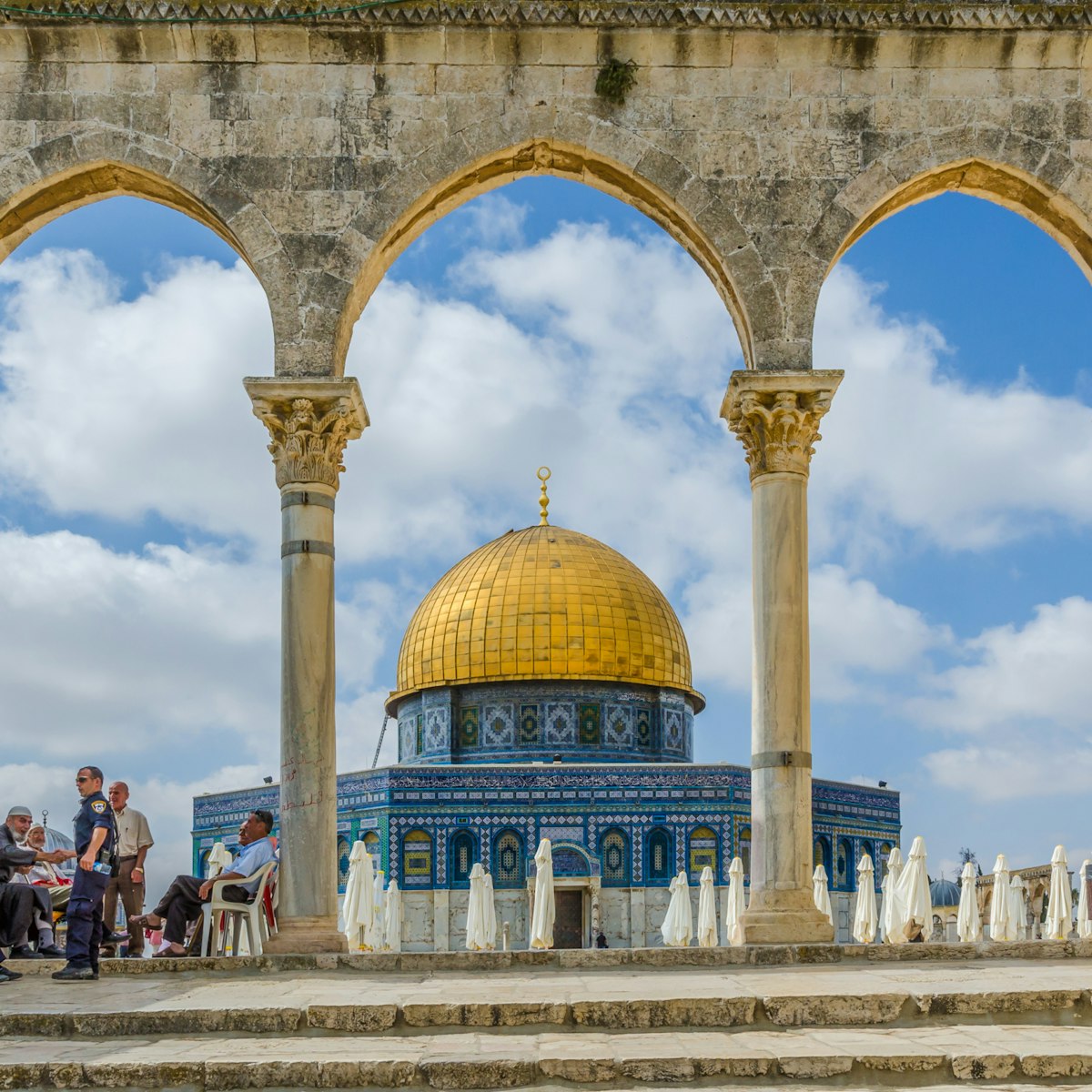
Temple Mount/Al Haram Ash Sharif
13.42 MILES
There are few patches of ground as holy – or as disputed – as this one. Known to Muslims as Al Haram Ash Sharif (The Noble Sanctuary) and to Jews as Har…
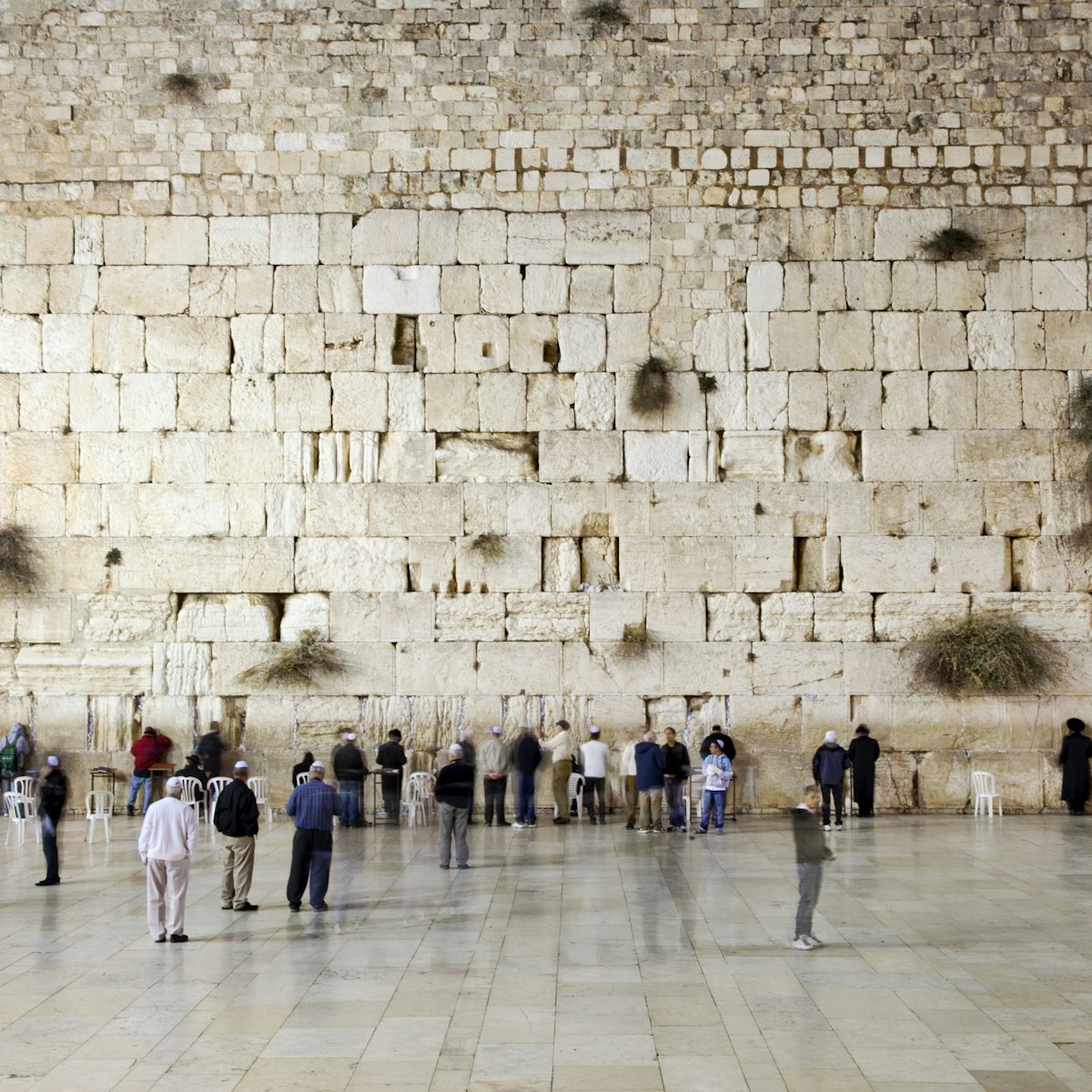
Western Wall
13.48 MILES
The air is electric at Judaism's holiest prayer site, where worshippers recite scriptures, lay their hands on 2000-year-old stone and utter impassioned…

Israel Museum
15.17 MILES
More than 5000 years of cultural treasures are assembled around the vast Israel Museum's indoor and outdoor galleries. Highlights are the titanic statues…

Masada National Park
29.96 MILES
The plateau atop Masada, which measures about 550m by 270m, is some 60m above sea level – that is, about 490m above the surface of the Dead Sea. The…

Ein Gedi Nature Reserve
19.37 MILES
This reserve consists of two roughly parallel canyons, Wadi David and Wadi Arugot, each of which has its own entrance complex and ticket office. It is…

Mar Saba Monastery
A must-see on any journey through the Holy Land is Mar Saba Monastery, a bleak and beautiful 20km drive east of Bethlehem (beyond Beit Sahour).

Royal Automobile Museum
27.21 MILES
You really don't have to be a car enthusiast to enjoy this museum, which displays more than 70 classic cars and motorbikes from the personal collection of…
Nearby Dead Sea attractions
1 . Ein Feshkha
Fed by crystal-clear springs, this lush oasis stretches for 6.5km along the base of the escarpment that forms the western edge of the Dead Sea valley…
2 . Nabi Musa
About 10km north of the Dead Sea, Nabi Musa is where Muslims believe Moses (Musa in Arabic, Moshe in Hebrew) was buried. A mosque was built on the site in…
3 . Qasr Al Yahud
At an isolated spot on the Jordan River, on the border between Jordan and the West Bank, stands the reputed spot of Jesus’s baptism by John, which began…
4 . St George's Monastery
The spectacular St George’s Monastery is a must-see in Wadi Qelt, built into the cliff face in the 5th century. The paintings inside the main chapel are…
5 . Amman Beach
This public facility goes under the full title of Amman Beach Tourism Resort, Restaurant & Pools. The beach, 2km south of the main resort strip, gives…
6 . Inn of the Good Samaritan
Located just off the main road from Jerusalem to Jericho, this site is associated with the popular biblical story about the Good Samaritan who, according…
7 . Oh Beach
This private beach, stepped down the hillside in a series of landscaped terraces and infinity pools, is a great way to enjoy the Dead Sea in comfort…
8 . Mar Saba Monastery
- Privacy Policy
- Advertising With Us
- Affiliate Partners

Qumran National Park and the Discovery of the Dead Sea Scrolls
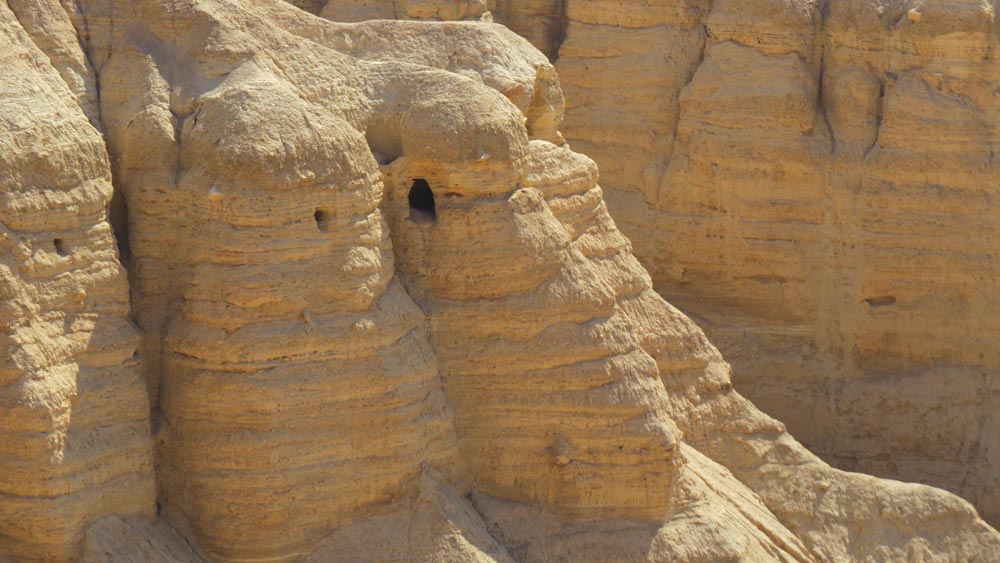
Qumran National Park, famous for the discovery of the Dead Sea Scrolls, is an amazing archaeological site located just Northwest of the Dead Sea near Kibbutz Kalia. It is commonly thought that this settlement was originally occupied since 134-104 BCE until it was destroyed by the Romans in 68 CE.
Qumran National Park
It is now a National Park, where you can view many remnants of the original inhabitants including a potter’s workshop, water cisterns, Jewish ritual baths, scriptorium (writing room where it is believed the Dead Sea scrolls were written) and pottery kilns along with a dining hall or community room and a tower. There is also cemetery just east of the site containing thousands of remains, mostly male. Based on the size of the cemetery site, it is thought that about 200 people inhabited the settlement at one time.
Don’t miss: The visitor center features an exciting and informative short film explaining the history of the settlement with the story of its inhabitants. Also, the center provides a breathtaking panoramic view of the nearby caves in which some of the Dead Sea scrolls were found.
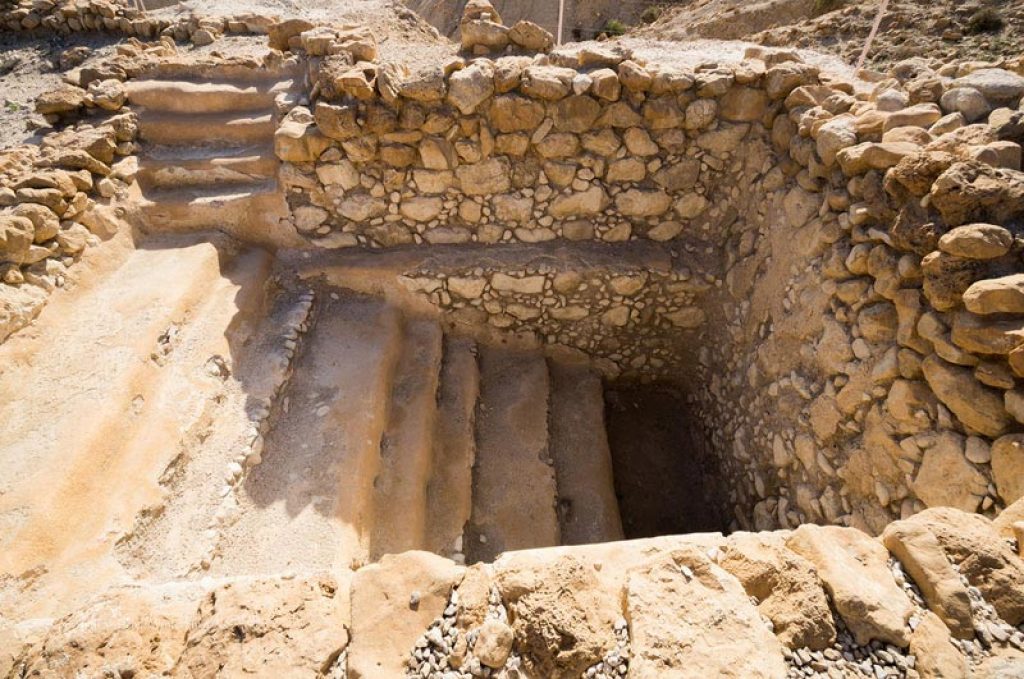
Dead Sea Scrolls
Currently, the Scrolls are actually not located at this site but at the Israel Museum’s Shrine of the Book in Jerusalem (I have been there, the building actually looks like a giant Hershey’s kiss). Actually, the scrolls were discovered between 1947-1956, in a series of eleven caves around Qumran. There is a debate among scholars as to what purpose these man made caves originally served. Some believe they were libraries while others claim they were domestic shelters for the residents of the settlement.
The Dead Sea Scrolls, considered to be the single greatest archaeological find of the 20th century contain the oldest known copies of the Hebrew bible. The scrolls date back to the 2nd century BCE to 70 CE and were written by the Essenes (a Jewish sect) and contain fragments of every biblical text with the exception of the Book of Esther.
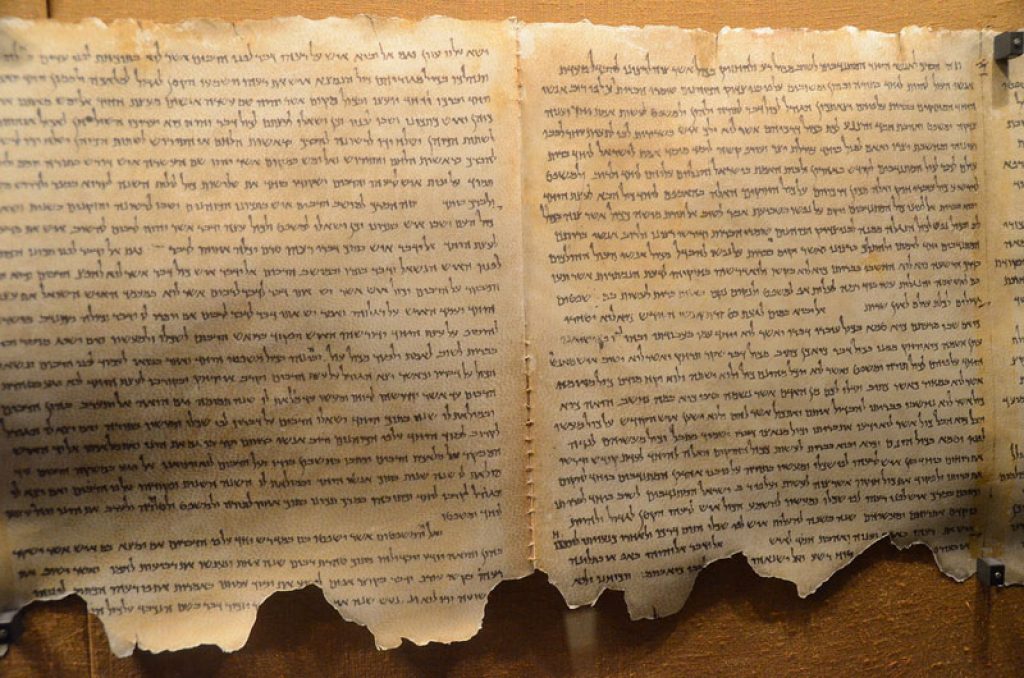
These texts (mostly written on parchment and papyrus) are nearly identical to their modern versions supporting claims to the historical dating of the Hebrew bible.
Since the discovery of the Dead Sea Scrolls by a young Bedouin in 1947, extensive excavations have been taken place in this area and as a result nearly 900 scrolls in total have been found
Really Interesting note: The Scrolls were found by accident; the young Bedouin boy was searching for his lost sheep and threw a rock into a cave, he heard something break. Upon further inspection he found a collection of ceramic jars containing the scrolls.

AHAVA DERMUD Intensive Duo Kit: Hand & Foot Cream (Dry Skin)
Bring the magic of the Dead Sea as a gift to that special person in your life! Attractively wrapped, these products will enhance beauty and well being. There is a:
- Fragrant hand cream. Its Dead Sea minerals nourish, soften and smooth
- Quality foot cream whose Dead Sea minerals impart a glowing sense of well-being

Extreme Night Treatment Oil
AHAVA offers this highly concentrated anti-wrinkle night treatment oil. It contains rich minerals from the Dead Sea. It works whilst you sleep, smoothing away wrinkles and keeping your skin firm and soft.
Approved for sensitive skin. Allergy Tested. Paraben free.
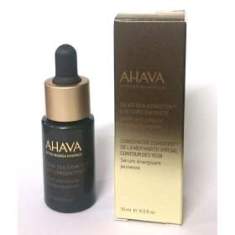
AHAVA Eye Concentrate Youth and Cellular Energizing Serum
This innovative, ultra-replenishing day cream and melting rich night cream elevates sagging skin and refines facial contours. Deep wrinkles begin to fade and youthful radiance returns. Clinically approved UVA, UVB and ex-vivo measured Infra Red protection is achieved with our SPF 20 Broad Spectrum coverage.
More about the Dead Sea from Israel Travel Secrets .
Labri’ut – (to health in hebrew) Bruce
Related Posts
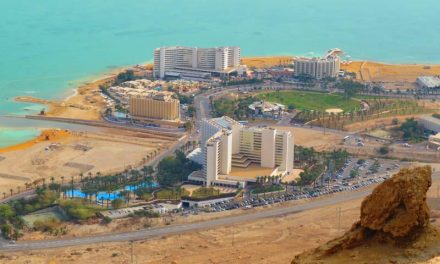
Learn All About Dead Sea Treatment
November 3, 2016
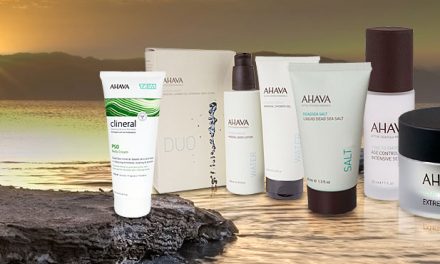
Authentic Dead Sea Skin Products from Israel
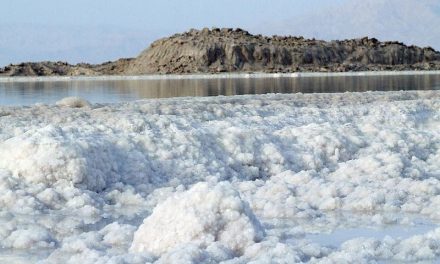
Dead Sea Salt Skin Therapy
November 2, 2016
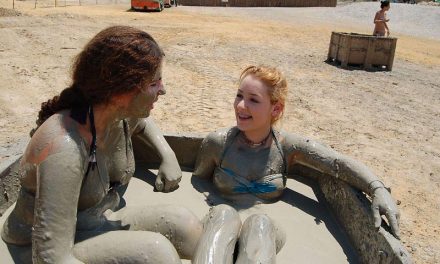
Discover The Natural Healing Power of Dead Sea Black Mud
Israel's secret travelzine, you have successfully subscribed, search hotels and more..., destination, check-in date, check-out date.

Our Partners

Pin It on Pinterest


Ancient Qumran
Where an ancient sect kept the world’s oldest library of scripture.
Perched on an arid plateau overlooking the northwestern shore of the Dead Sea, Qumran is an archeological site dating back to the Iron Age. During its heyday the community was home to about 200 people, and included homes, cisterns, a fortress, a cemetery, and most famously, a series of caves in which scriptures were stored. The discovery of these caves – and the Dead Sea Scrolls contained inside them – was one of the greatest archeological discoveries in history, and gave Qumran a permanent place in the imaginations of scholars, historians, theologians and believers around the world.
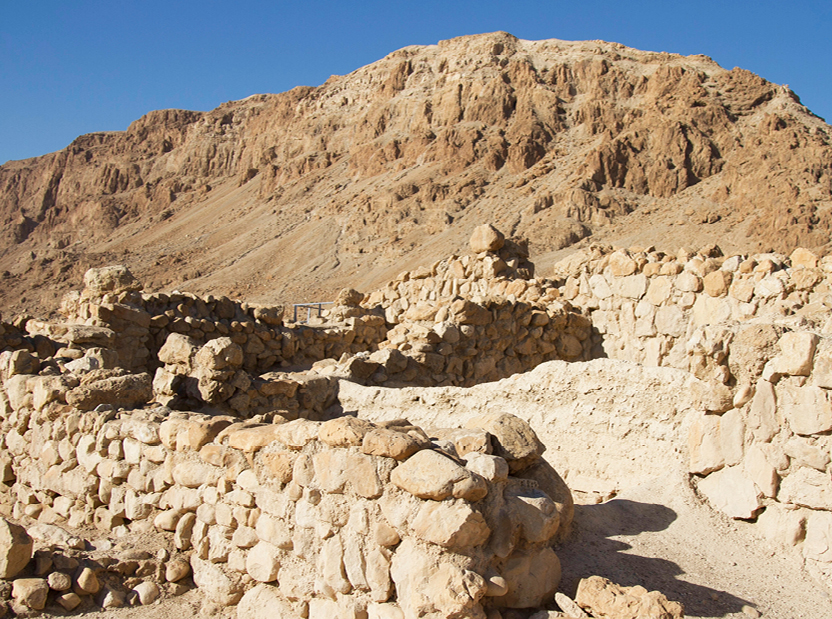
ARCHEOLOGICAL SITE
The Qumran hamlet was established in the eighth century BCE. A rectangular fortress on the site dates from this early period, which lasted until the Babylonian invasion of Judea and the destruction of the First Temple in 586 BC. The site was abandoned in the wake of the Babylonian exile, and resettled in the second century BCE (the Hasmonean Era). Bronze coins found on the site establish a period of continuous habitation beginning from the rule of John Hyrcanus (135–104 BCE) and continuing through the First Jewish-Roman War (66–73 CE).
The contents of the Dead Sea Scrolls, along with archaeological evidence and supporting historical texts, have led scholars to conclude that Qumran was inhabited by a sectarian religious community sometimes referred to as the Dead Sea Sect or “Hayachad” (together) sect. Many scholars believe that this sect was in fact a community of highly ritualistic Jews called the Essenes.
Later coins from the period of the Bar Kokhba Revolt (132-135 CE) were also found at Qumran, indicating that some of the late Judean fighters also found shelter in its ruins. The name Qumran, from the Arabic word meaning “crescent moon,” replaced an earlier name for the community, which has since been lost to history.
THE DEAD SEA SCROLLS
In the winter of 1946-7, Bedouin shepherd Muhammed Edh-Dhib followed a goat into a cave near Qumran and emerged with 7 ancient scrolls. The finding led to the discovery of ten other caves over the ensuing decade yielding a total of 929 texts – scrolls housed in jars inside the caves – known collectively as the Dead Sea Scrolls.
The scrolls include the oldest manuscripts of the Hebrew Biblical Scriptures ever found. Most have been carbon dated to the second and first century BC. As evidence of the diversity of religious and political ideas in existence at the period of the Second Temple, they are of monumental historical, religious and linguistic significance. They also provide invaluable information about Qumran’s inhabitants’ daily life and way of thinking.
The texts are written mostly in Hebrew and Aramaic, along with Greek and Nabataean. The scrolls – mostly written on parchment but some on papyrus or bronze – can be divided into three groups:
1. Copies of texts from the Hebrew Bible 2. Texts from the Second Temple Period and which ultimately were not canonized in the Hebrew Bible, such as the Book of Enoch, Jubilees, the Book of Tobit, the Wisdom of Sirach, and certain Psalms. 3. Sectarian manuscripts of previously unknown documents that shed light on the rules and beliefs of the Dead Sea Sect (probably Essenes) or other Jewish sects. Such manuscripts include the Community Rule, the War Scroll, and The Rule of the Blessing.
Of all the scroll’s contents, perhaps the most remarkable are similarities of several of their expressions to teachings of Jesus that appear in the New Testament. Paul used terms that can be found in the scrolls written at Qumran, and according to some scholars, the sect is also hinted at in the Gospel of John.
Several historical texts describe a sect of Jews called the Essenes, some of whom lived near the northwestern coast of the Dead Sea, whose practices were similar to those of the Dead Sea Sect as depicted in their manuscripts. This leads many scholars to conclude that the Essenes were in fact the sect that assembled the library of manuscripts that comprise the Dead Sea Scrolls. Recent interpretations have challenged this association and suggest that the sectarian scrolls came from Jews living in Jerusalem who hid them away for safekeeping as the Romans destroyed their city, or that the sect living at Qumran were actually Zadokite (Saducean) Priests.
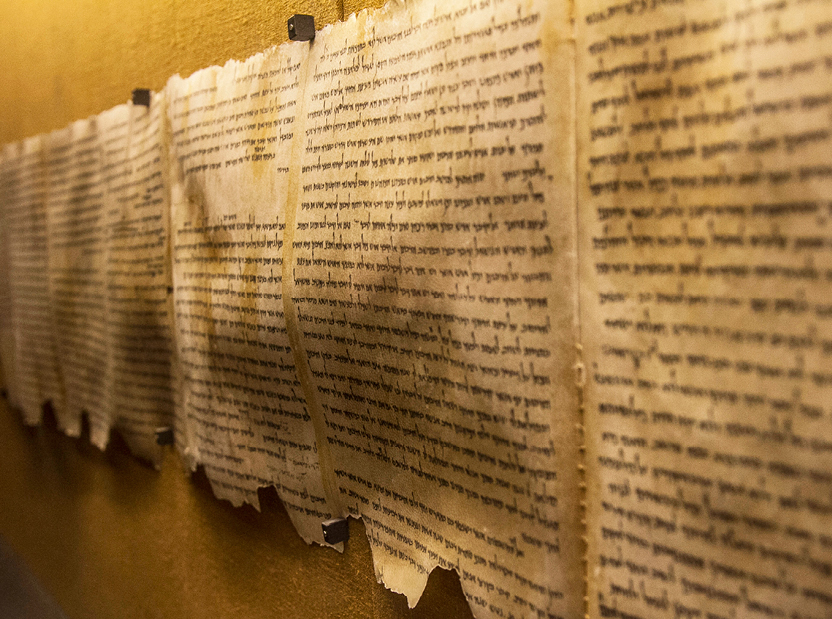
THE ESSENES
The people who lived in Qumran during the Hasmonean Era and at the beginning of the Roman period were probably Essenes, a sect of Second Temple period Judaism that existed from the second century BC to the first century AD.
During the Second Temple period there were several ascetic, mystic, and messianic sects that broke off from the mainstream Judean social order. The Essenes were the largest such sect, living in cities throughout Judea, but also on the northwestern shores of the Dead Sea, which is one of the stronger indications that they are the Dead Sea Sect who lived in Qumran.
The Essenes renounced wealth and material comforts and elected to live a communal life of asceticism. They rejected the ways of the two larger Jewish denominations at the time – the Pharisees and the Sadducees – and saw themselves as the true inheritors of the Saducean (Zadokite) priestly traditions.
After the discovery of the Dead Sea Scrolls in Qumran, the similarity of the ideas contained in the scrolls’ sectarian manuscripts and ideas attributed to the Essenes in other historical texts further buttressed the theory that the Essenes were either the authors of the scrolls or the “librarians” who assembled and stored them.
The daily routine of the sect is described in the scrolls. They would rise at dawn and begin the day with communal prayer. After the prayer they worked – some as shepherds of sheep and goats, others as farmers (of dates), or in communal functions like drawing water or preparing food. In the afternoon, they immersed themselves in water as part of a ritual bath before praying again. A communal meal prepared by the priests, was then eaten in hallowed silence. The Essenes prayed once again at sunset, and spent much of the night studying scriptures.
Some scholars have also theorized that John the Baptist himself lived among the Essenes. Though there is no direct evidence of this theory, it is supported by certain similarities between John’s recorded life and practices, and those of the Essenes. Both John and the Essenes lived in the desert, saw themselves as “voices in the wilderness” as prophesied by Isiah, and practiced baptism.
Although the Essenes believed that all of life was pre-ordained by God, their belief in free-will led them to aspire to righteousness. They saw the world as being divided into righteous and evil, and built their lives around a commitment to keep the righteous path. They believed that a great and final war was before them – one in which the world would be destroyed – and saw their role as one of readying the world for the new social order that would come in its wake.
EXCAVATIONS
Qumran was known to nineteenth century European explorers. The cemetery was the focus of the earliest excavations, conducted by Henry Poole in 1855 and followed by Charles Clermont-Ganneau in 1873. A string of late nineteenth and early twentieth century archaeologists and scholars visited the site, taking note of the fortress and cistern, and establishing Qumran as part of a string of fortresses along the southeastern border of ancient Judea.
Full-scale excavations of Qumran began after the discovery of the Dead Sea Scrolls in the late nineteen forties. In the winter of 1946-7, Bedouin shepherd Muhammed Edh-Dhib went into a cave near Qumran and emerged with 7 ancient scrolls. The war that broke out in the years that followed made it impossible to explore the cave until February 1949. It was then that Lancaster Harding, director of the Jordanian Department of Antiquities, and Roland de Vaux, of the Palestine Archaeological Museum, arrived at the cave, known as Cave 1, and began to dig. Soon de Vaux was given authorization to conduct a full scale excavation of the area.
The site that de Vaux uncovered contains two sections: the main building, a two story structure with a central courtyard and a defensive tower on its corner; and a secondary building to the west. The excavation also revealed a complex water system featuring an aqueduct that delivered water to several cisterns and ritual baths around the site, two of which were within the walls of the main building. These findings indicated a community that was consistently developing, with many improvements and new projects undertaken to accommodate growth.
The contents of the Dead Sea Scrolls, which continued to be discovered in nearby caves throughout De Vaux’s excavations of the main site, led scholars to conclude Qumran was inhabited by a sectarian religious community. Additional texts, like the historical accounts of Josephus Flavius, Philo, and Pliny the Elder, led De Vaux and others to adopt the theory that the site was inhabited by a sect of highly ritualistic Jews called the Essenes (despite the fact that the term “Essene” does not appear in the scrolls themselves).
Although de Vaux’s excavations of Qumran were quite exhaustive, and thereby the most important source of information on the settlement, there have been several excavations since de Vaux finished his work, notably:
• The 1967 restoration performed by R.W. Dajjani on behalf of Jordan’s Department of Antiquities • A systematic survey of the caves and pathways around Qumran conducted by Joseph Patrich and Yigael Yadin between 1984 and 1991. Patrich concluded that the caves were not inhabited by the Dead Sea Sect, but were rather used as hiding places and storage. • “Operation Scroll”: from November 1993 to January 1994, under the direction of Amir Drori and Yitzhak Magen, the Israel Antiquities Authority carried out works in the Qumran compound. • In the winter of 1995-1996 and later seasons Magen Broshi and Hanan Eshel carried out further excavations in the caves north of Qumran, in the cemetery and in marl terrace caves. • Continued excavations as recent as 2010.

VISITING QUMRAN
The site of ancient Qumran is operated by the Qumran National Park, under the direction of Israel’s National Parks Authority. For visiting hours, prices and other useful information, visit the Nature and Parks Authority website.
Just outside the park gates, the Qumran Visitor’s Center offers dining, shopping and tourist information to the public at large.
The Qumran Visitor Center restaurant is open daily from 11:30 to 16:00 (including Friday, Saturday and Sunday).
The Qumran Visitor Center gift shop features exotic hand-made jewelry from the Qumran region, religious icons, relics and souvenirs, and authentic Judaica made by local artisans.
The nearest lodgings are located at Kibbutz Kalia, about 1 mile (1.5 km) from Qumran National Park. Overnight guests of Kibbutz Kalia are invited to participate in the unique experience of Kibbutz life by taking their meals in the communal cafeteria. Guests also are welcome to make use of the Kibbutz facilities, which include a swimming pool and horse stables. Kibbutz staff can arrange desert jeep tours. For more information.
Visitors who would like to combine a trip to Qumran National Park with a dip in the Dead Sea can visit Kalia Beach, about 2 miles (3 km) from the archaeological site. Kalia Beach is one of the only places on the Dead Sea shore where bathers can also dip in natural Dead Sea mud located on the premises. Additional facilities include a restaurant, a cafeteria, souvenir shops, showers and toilets. For more information.

To learn more about the guidelines about travel to Israel - click here

In 1946, near a desolate spot in the Judean desert known as Khirbet Qumran, a Bedouin teenager crawled into a cave and discovered multiple clay jars he hoped were filled with treasure. He was disappointed when what he found inside was just some old scrolls. These old scrolls turned out to be more valuable than treasure though, and this accidental discovery exploded into an 11-year search producing almost 900 different manuscripts.
This was the greatest biblical manuscript discovery of all time confirming the reliability of the Old Testament. The manuscripts range from full scrolls to tiny fragments, written on papyrus, parchment, and bronze. They are written in Hebrew, Greek, and Aramaic, and can be divided into two categories: biblical books (Isaiah, Jeremiah, Psalms, etc.) and non-biblical books (prayers, legal, and end-time documents).
The initial scrolls were in such great shape that buyers doubted they were actually ancient. The scrolls were most likely hidden in this near perfect environment when word came of the approaching Roman army bent on crushing the Jewish Revolt (66-73 A.D.). It was written by the Essenes, a separatist sect of Jews who had retreated into the wilderness, and among other things, painstakingly transcribed the Scriptures over several years. The scrolls are significant because they are the oldest group of Old Testament manuscripts ever found. The ruins of the Qumran community where the Essenes lived can be visited today. The excavations revealed pools that were used for ritual baths, cisterns, storehouses, and a large meeting hall.
The most interesting room is the Scriptorium, where two inkwells were found with benches for scribes to do their work. This room is probably where many of the manuscripts were copied
FROM THE SCRIPTURES:
Oh, how I love your law! It is my meditation all the day. Your commandment makes me wiser than my enemies, for it is ever with me. I have more understanding than all my teachers, for your testimonies are my meditation. I understand more than the aged, for I keep your precepts. I hold back my feet from every evil way, in order to keep your word. I do not turn aside from your rules, for you have taught me. How sweet are your words to my taste, sweeter than honey to my mouth! Through your precepts I get understanding; therefore I hate every false way (Psalm 119:97-104 ESV).
Your word is a lamp to my feet and a light to my path. I have sworn an oath and confirmed it, to keep your righteous rules. I am severely afflicted; give me life, O LORD, according to your word! Accept my freewill offerings of praise, O LORD, and teach me your rules. I hold my life in my hand continually, but I do not forget your law. The wicked have laid a snare for me, but I do not stray from your precepts. Your testimonies are my heritage forever, for they are the joy of my heart. I incline my heart to perform your statutes forever, to the end (Psalm 119:105-112 ESV).
For the word of God is living and active, sharper than any two-edged sword, piercing to the division of soul and of spirit, of joints and of marrow, and discerning the thoughts and intentions of the heart. And no creature is hidden from his sight, but all are naked and exposed to the eyes of him to whom we must give account (Hebrews 4:12-13 ESV).
Ein Gedi *
Ein Gedi and its nature reserve on the shore of the Dead Sea, is where the fauna and flora of a splendid nature reserve intersect with great biblical adventures. This oasis has been a green Garden of Eden in the wilderness since ancient times, a refuge in the endless desert. The living landscape of David’s hideout from Saul and the Song of Solomon comprise some of these adventures.
As you climb the path toward the sparkling waterfall, the picture of David hiding from King Saul (1 Sam. 24:1-22) comes alive with a view of cliff-side caves. The spirited animals that gave the site its biblical name, the “crags of the wild goats” (1 Sam. 24:2), rest at cave entrances and walk around the reserve. The water gurgling through the tangled reeds and under shady acacias once nourished the beds of spices that enrich the poetry of the Song of Solomon (Song 1:14).
The mosaic floor at the excavated remains of the Ein Gedi Ancient Synagogue and town shows the dramatic story of Ein Gedi’s people at the time of Jesus The inhabitants of Ein Gedi in present days have established an internationally acclaimed botanical garden, where you can find more than 900 species of plants from all over the world.
FROM THE SCRIPTURES
David Spares Saul's Life
1 Samuel 24:1-7 (ESV)
When Saul returned from following the Philistines, he was told, “Behold, David is in the wilderness of Engedi.” Then Saul took three thousand chosen men out of all Israel and went to seek David and his men in front of the Wildgoats' Rocks. And he came to the sheepfolds by the way, where there was a cave, and Saul went in to relieve himself. Now David and his men were sitting in the innermost parts of the cave. And the men of David said to him, “Here is the day of which the Lord said to you, ‘Behold, I will give your enemy into your hand, and you shall do to him as it shall seem good to you.’” Then David arose and stealthily cut off a corner of Saul's robe. And afterward David's heart struck him, because he had cut off a corner of Saul's robe. He said to his men, “The Lord forbid that I should do this thing to my lord, the Lord 's anointed, to put out my hand against him, seeing he is the Lord 's anointed.” So David persuaded his men with these words and did not permit them to attack Saul. And Saul rose up and left the cave and went on his way.
Song of Songs 1:14 (ESV)
SITES TO SIGNIFICANCE
Itineraries.
- LATEST INFORMATION AND UPDATES
- ISRAEL GOVERNMENT TOURISM OFFICES
- ISRAEL IN THE MEDIA
- STATISTICS AND RESEARCH

Photographers: Guy Yehieli, Adam Primer, Kfir Boltin, Linnea Andres, Kfir Sivan, Haim Yafim, Dana Fridlander, refael Ben Ari, Itamar Greenberg, Moshik Lindbaum, Ori Ackerman Video Credits: Israeli food channel, National Geographic
- OFFICIAL BROCHURE
- TERMS OF USE
- PRIVACY POLICY
FOR MORE DEALS:

10 Top-Rated Tourist Attractions in Israel's Dead Sea Region
Written by Jess Lee Updated Jan 19, 2023
It's the sea where you can't sink. The geological wonder of the Dead Sea is one of the must-do tourist attractions in the Middle East.
At more than 400 meters below sea level, this Great Rift Valley inland lake has an incredibly high salt content due to evaporation being the only water outlet. This is what causes the bizarre buoyancy of the water.
Taking a swim (you really can't sink) in the water is number one on the things to do list here, but the surrounding escarpment is also one of the best places to visit in the country for hiking opportunities, and there's also a handful of interesting historical monuments to visit in the area.
Combining Dead Sea sightseeing with a trip to the dramatic Jewish fort of Masada , nearby is a good idea, and the small towns of Ein Bokek (along the Dead Sea shore) and Arad (inland) are both good bases for those who want to stay overnight.
Sights below are listed north to south to aid visitor navigation. Find out all the things to do along the shore with our list of the top tourist attractions in Israel's Dead Sea region.
Kalia Beach
Wadi arugot, ein kedim hot springs, mount sodom, history of the dead sea region & information, map of israel's dead sea region - top attractions.
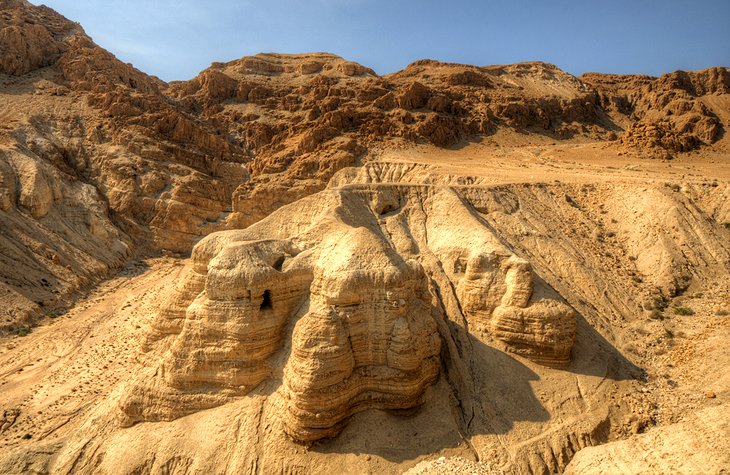
The caves of Qumran are the location of one of the greatest religious discoveries of modern times. It was here that in 1947 a Bedouin shepherd stumbled upon a cache of parchment and papyrus documents dating from the 1st century BCE and the 1st century CE.
Known as the Dead Sea Scrolls, they are the oldest surviving manuscripts of the Bible and include all the books of the Old Testament (except Esther), together with apocrypha, and various writings that describe life in the time of Jesus.
The manuscripts are believed by most scholars to all be the work of the Essene community, a strictly-observant and puritanical Jewish sect that came into being about 150 BCE after conflicts in Jerusalem over superficial temple rites and Hellenistic influences.
They established their center at Qumran, and although it was destroyed by the Romans during 68 CE, the Essenes managed to hide their library and archives in the surrounding caves where they were finally discovered.
Altogether, more than 500 Hebrew, Aramaic, and occasionally also Greek manuscripts, 10 of them almost completely preserved, have been found in 11 caves at Qumran.
Some are on display in Jerusalem's Israel Museum, and others are exhibited in the Jordan Museum, in Amman, but due to many of the scrolls disintegrating into fragments across the centuries, the work of scholars attempting to piece together and decipher the texts is ongoing.
The ruins here are not huge, but the kitchen, scriptorium, and refectory can be seen, together with two cisterns, the remains of an aqueduct , which fed the pools for ritual ablutions, and you can also visit a cave where some of the scrolls were found.
There's also an excellent audiovisual presentation that helps you make sense of the ruins.
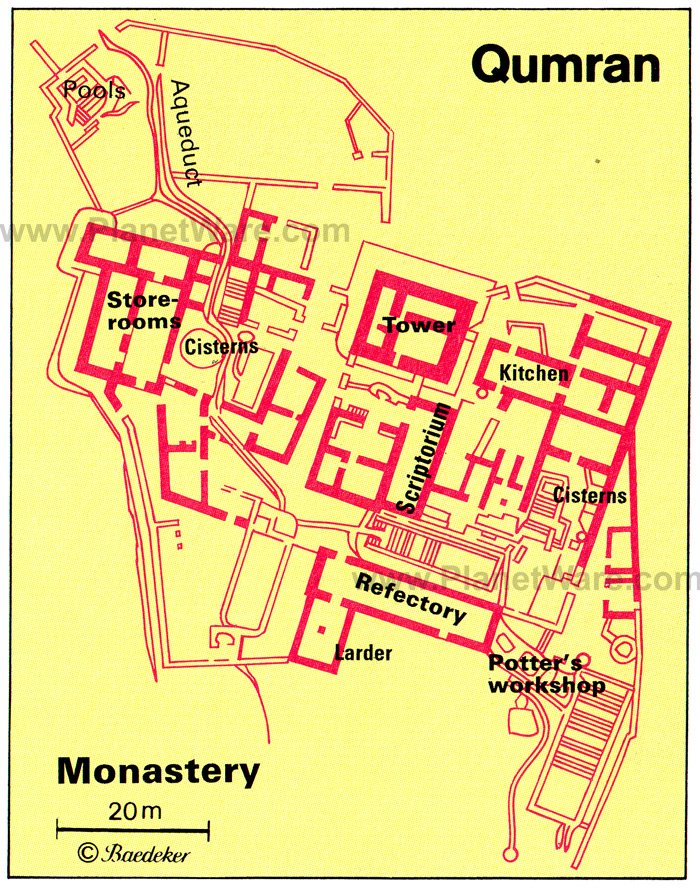
Sitting right on the northern corner of the Dead Sea, just six kilometers north of the Qumran ruins, this entrance-fee beach facility offers an easygoing Dead Sea experience with full facilities on hand. If you want to go swimming in the Dead Sea , this is a good spot.
On the beach itself, you'll find sun loungers and sunshades, changing rooms, and the all important freshwater showers to hose off the salt after your dip. All these facilities are included in the entrance fee so there aren't any extra charges.
Rimming the shore, you'll also find souvenir shops selling Dead Sea beauty products incorporating the famous, mineral-rich Dead Sea mud; a small spa offering massages; and a restaurant and cafés.
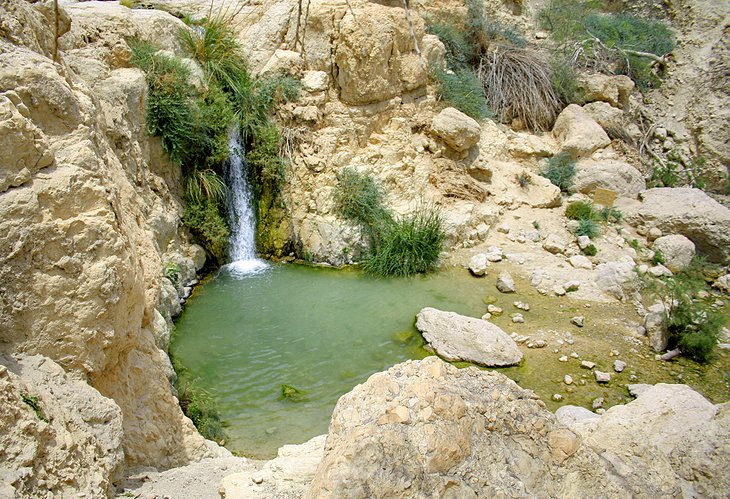
Wadi David is one of the two valleys that incorporate En Gedi Nature Park .
This area of lush vegetation — in striking contrast to the surrounding desert hills — is a haven for hikers and wilderness lovers .
The shortest hike here is an easy amble up to the waterfall, which is only 1.5 kilometers long return. For a longer circular hike, covering between six and nine kilometers, trek from the waterfall up to En Gedi Spring.
If you head northwest of this on the trail, you'll find the remains of a 4th millennium BCE Chalcolithic temple dedicated to the cult of the moon. In the center of the building is the circular "moon stone," while two gates of the sacred precinct face towards En Gedi Spring on one side and the Shulamite Spring on the other.
From the Shulamite Spring, a track continues north to the Dodim Cave above the waterfall.
From the temple, tracks run northwest to the Dry Canyon and west to a square Roman fort and a circular Israelite stronghold.
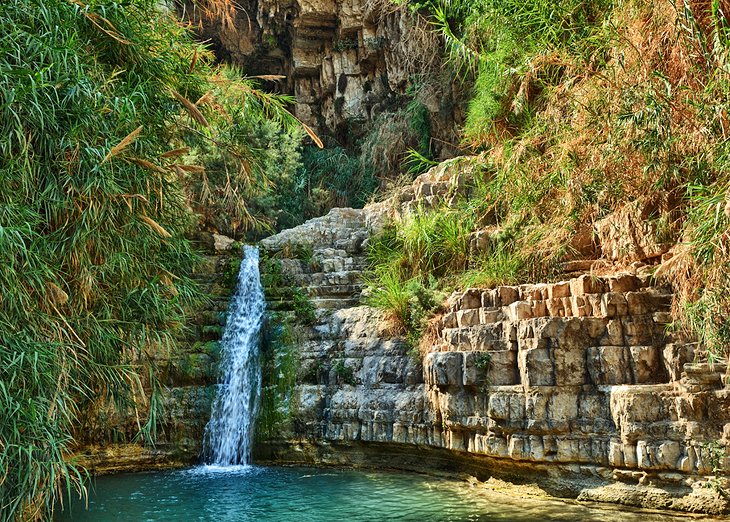
Wadi Arugot is En Gedi Nature Park's southern valley, and the trailhead is a two-kilometer walk south from Wadi David .
Like Wadi David there are a multitude of pools and waterfalls along the trails here, though some of the hiking in this wadi is more difficult than in Wadi David, so it tends to get less visitors.
Some of the trail, following the river as it winds between steep arid cliffs, is traversed by walking through water, so prepare to get wet.
Just northwest of Wadi Arugot's trailhead, accessed either from along the main Dead Sea highway or by the walking path that connects the trailheads of Wadi David and Wadi Arugot, is En Gedi's ancient synagogue ruins, officially called En Gedi Antiquities Site.
Farmers working the fields discovered the synagogue ruins by accident in the 1960s, and later excavations revealed the synagogue's intricate mosaic pavement of swirling fauna motifs, central zodiac motifs, and surviving inscriptions, which date from the late Roman era.
Even if your main aim in En Gedi is to head out hiking, it's worthwhile making a stop here to visit the synagogue.
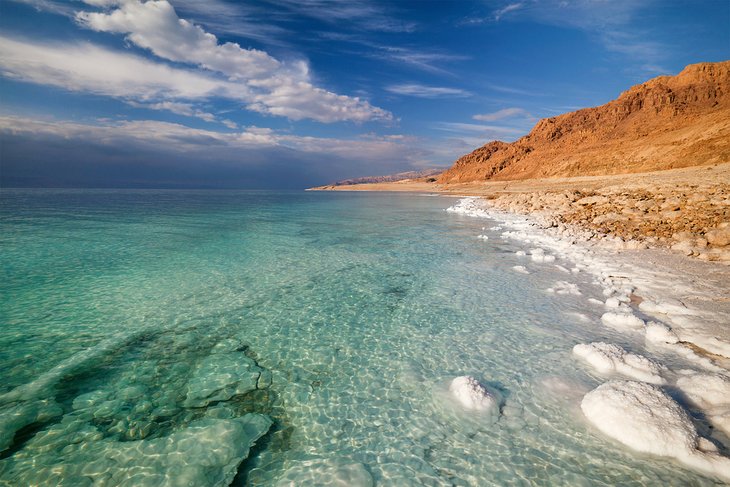
For a no-frills Dead Sea experience, head to Ein Kedim beach (10 kilometers north of En Gedi) where there are natural sulfuric hot pools along the shoreline , so you can soak in the hot water before and after floating in the Dead Sea.
If you're on a budget and don't want to pay an entrance fee to access the Dead Sea, this is one of the best options.
Be aware that there are absolutely no facilities here , and the shoreline is stony. Wear sandals or flip-flops to protect your feet.
You will also need a 4WD to navigate the dirt path down to the beach from the highway. Otherwise, leave your vehicle at the highway car park and walk down to the beach.
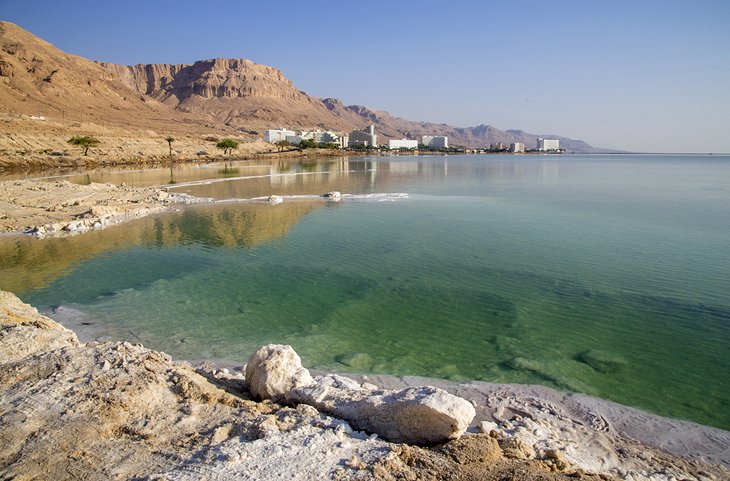
The southern end of the Dead Sea is the most built-up area on the western shore, and Ein Bokek is the largest resort area. The mineral springs here have been used for therapeutic purposes since ancient times.
The resort itself is home to several spa hotels that cater both for travelers who are seeking a luxurious Dead Sea spa experience and those who have come here specifically to seek medical treatments for skin conditions.
Ein Bokek Beach has no entrance fee and good facilities , including free freshwater showers and plenty of sun loungers and sunshades. There are plenty of cafés and restaurants nearby for refreshments.
To the north of town are the remains of the small fortress of Castle Bouqik, dating from the Roman period. The hike up to the ruins, via a mostly shaded creek, provides you with expansive views across the Dead Sea.
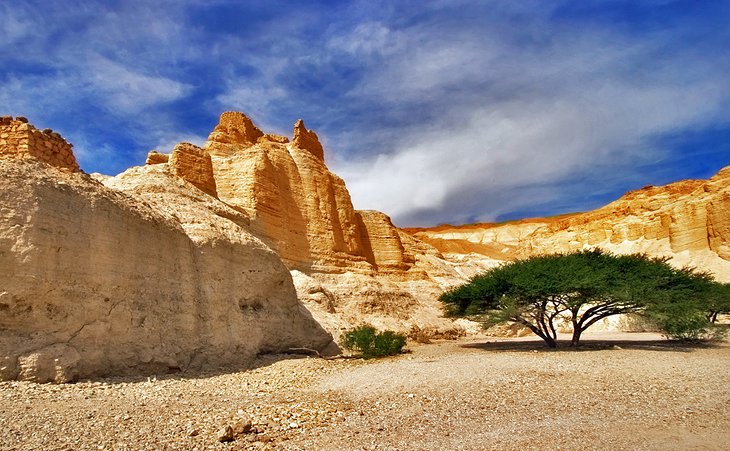
Wadi Bokek is another great Dead Sea hiking experience full of gorgeous greenery and gushing springs, which make a pleasing and rather photogenic contrast against the stark cliffs looming overhead.
The hiking here is relatively easygoing , and anyone with decent fitness levels can hit the trail through the wadi, so it makes a good stop to stretch out your legs - especially if you've spent most of the day lazing on the beach and want to break up all that bobbing about in the water with some exercise but don't want a challenging walk.
The trailhead is just off Highway 90 in Ein Bokek.
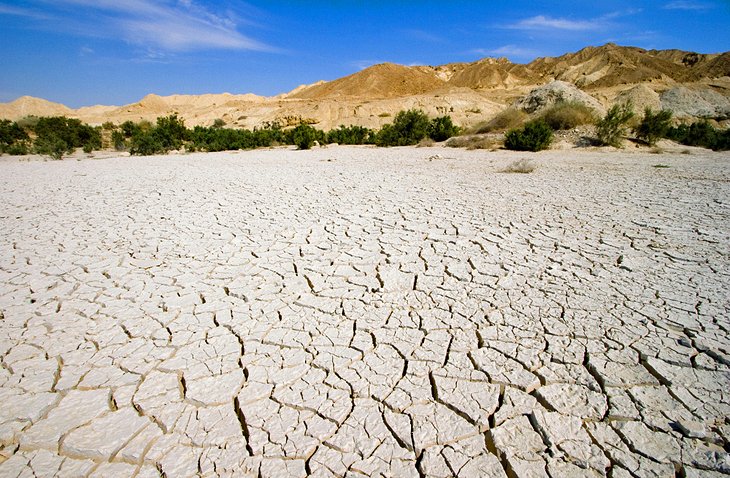
Neve Zohar, five kilometers south of Ein Bokak, has a spa, restaurant, and several hot mineral springs to soak in. The shoreline here is dangerous due to sinkholes, so there are no beach facilities.
It's worth a stop on your Dead Sea itinerary for the three-kilometer walk from here up to Mezad Zohar (Zohar Fort) , a stronghold situated on a conical limestone crag amid magnificent mountain scenery.
Dating from the Roman era, the fort was built to control the trade of minerals from the Dead Sea. It was later held by the Byzantines.
On the road between Neve Zohar and Arad are two lookout points where you can enjoy excellent views across the Dead Sea.
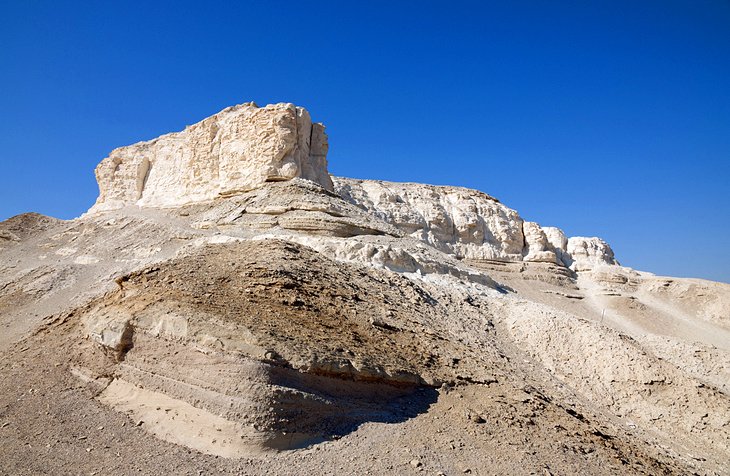
This rock-salt mountain, nine kilometers south of Neve Zohar, is a must for those who want to add a bit of adventure into their Dead Sea experience.
As you may have guessed from the name, this is one of the sites traditionally thought to be the Old Testament's Sodom .
On the eastern side of the Dead Sea, Jordan claims its own Sodom site, with much more archaeological evidence to back up its claim.
There's plenty of hiking and mountain biking trails here for the active, and since the top of the mountain is still 176 meters below sea level, it may be the lowest mountain you ever get to climb.
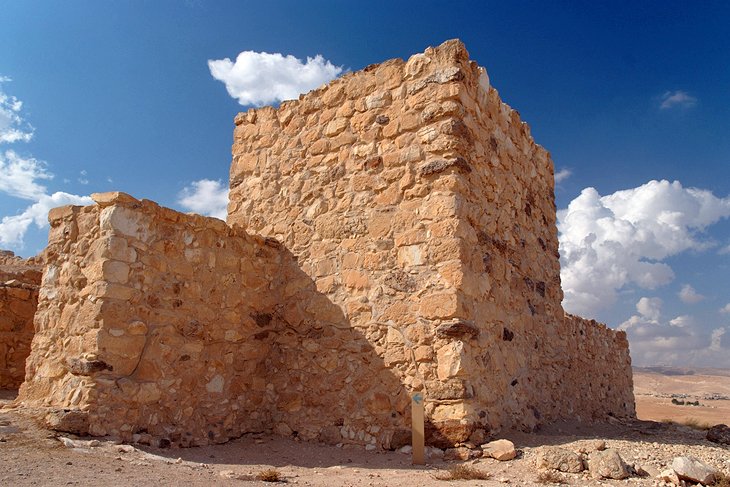
This modern town , founded in 1961, is best known for the important Tel Arad archaeological site just on its doorstep.
The Canaanite town excavated here dates back to the 2nd millennium BCE, with a palace and temple precinct to the northwest of the site, and to the southwest, residential quarters.
A line of walls, which would have been reinforced by round towers and extended up to the citadel on the acropolis, can still be traced for considerable stretches.
The structures on the acropolis that can be seen today date from the post-Canaanite period. They were built over a period of more than a thousand years, extending from early Israelite to Roman times.
The massive walls of the citadel have been rebuilt, using original material, and the complex is entered through the east gate, which is flanked by massive towers. Within the walls lie remains of various store-rooms and a Hellenistic tower.
The most important building, however, is the Jewish temple in the northwest of the citadel. The temple is the only Jewish sacred building of its kind so far brought to light by excavation.
Since excavation is not permitted on the temple platform in Jerusalem, the Arad temple, several times destroyed but each time rebuilt, is therefore of great importance to archaeology and the history of religion.
The Dead Sea (Hebrew Yam Hamelach, "Salt Sea"; Arabic Bahr Lut, "Sea of Lot") lies between Israel and the Palestinian Territories and Jordan, more than 400 meters below sea level, making it the lowest point on the surface of the earth.
It is called a "dead" sea because of the high salt content (25-30 percent, compared with 3.5 percent in the Mediterranean) of its water, in which neither plants nor animals can live.
With a length of 65 kilometers and a maximum breadth of 16 kilometers , this inland lake is divided by a peninsula projecting from the eastern shore into a smaller southern section, with a depth of only four to six meters and a larger northern section up to 433 meters deep.
The main inflow of water into the Dead Sea comes from the Jordan River. It has no outlet, but in the hot climate of the area (annual mean temperature of more than 25°C) the rate of evaporation is so high, that the water level has remained almost constant.
In recent years, however, so much water has been diverted from the Sea of Galilee that the inflow of water into the Dead Sea from the Jordan River has been reduced and the water level has fallen. As a result the northern and southern sections are now completely separated by the peninsula.
The reduced inflow of fresh water means that the salt content is increasing and there are severe environmental concerns that the Dead Sea may completely disappear in coming years.

More on Israel
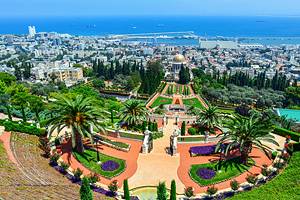
Monday - Friday 9:00 AM - 5:30 PM, Pacific Standard Time

Qumran , is an archaeological site situated northwest of the Dead Sea shore on the West Bank and managed by Israel's Qumran National Park. The site was occupied mostly during the Greco-Roman period (ca. 150 BC-68 AD). The community that lived in Qumran is identified with the Essenes people, a religious sect, that lived in isolation in this region west of the Dead Sea. Qumran became well known in 1947, when a Palestinian shepherd discovered in a cave a series of scrolls, which are known today as the Dead Sea Scrolls.
General Information
Plan a tour
Do you know: The surrounding site of Qumran is identified by some scholars as the biblical “City of Salt” unesco.com .

Qumran National Park
Visit Qumran on a Israel Tour
Dead Sea Scrolls
Photo from a Dead Sea Scroll at Qumran National Park.
- Travel Guide: Israel
- Region: Dead Sea
Hotels near National Park Qumran, Kalia
Enter your dates and choose from 71 hotels and other places to stay, featured hotels near national park qumran, star rating, review score.

כפר נופש קלי"ה ים המלח
Located within an Israeli settlement, כפר נופש קלי"ה ים המלח is surrounded by green plants and gardens with outdoor swimming pool. Located in the desert, it is 4.3 mi from the beaches of the Dead Sea....
Located in Sowayma, 11 miles from Bethany Beyond the Jordan, East hotel has accommodations with an outdoor swimming pool, free private parking, a fitness center and a garden.
Located within 8.5 miles of Church of All Nations and 8.5 miles of Garden of Gethsemane, Dhotel provides rooms in Ma'ale Adumim.

Russian Pilgrim Residence
Located at a sacred site on the banks of Jordan River, Russian Pilgrim Residence offers fully furnished apartments with a private kitchen.

O Beach Hotel & Resort
Located in Sowayma, 1.1 mi from Amman Beach, O Beach Hotel & Resort provides accommodations with a restaurant, free private parking, an outdoor swimming pool and a garden.
Selina Mantur Almog Dead Sea
Located in Almog, 11 miles from Allenby/King Hussein Bridge, Selina Mantur Almog Dead Sea has accommodations with a garden, free private parking, a shared lounge and a restaurant.
Top 10 trending hotels near National Park Qumran
Discover our most popular hotels from the last 30 days, enjoy breakfast at hotels near national park qumran.

Location, big parking places, meals , nice and helpfully staff

Excellent Breakfast, very generous and clean food.

The staff was very friendly, especially the lifeguard.
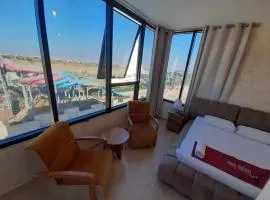
Dolphin Suites Hotel
Located in Jericho, 7.9 miles from Allenby/King Hussein Bridge, Dolphin Suites Hotel has accommodations with a terrace, free private parking, a restaurant and a bar.
מיקום בשכונה חדשה שקטה , מול פארק safari aqua park ,

Qasr alnkheel resort and hotel
Located in Jericho, 5.7 miles from Allenby/King Hussein Bridge, Qasr alnkheel resort and hotel provides accommodations with an outdoor swimming pool, free private parking, a garden and a shared lounge...

فندق وادي القلط
فندق وادي القلط features an outdoor swimming pool, garden, a shared lounge and restaurant in Jericho.
Research, refine, and make plans for your whole trip

List your property
- Mobile version
- Your account
- Make changes online to your booking
- Customer Service Help
- Booking.com for Business
- Places of interest
- Guest Houses
- Unique places to stay
- Discover monthly stays
- Travel articles
- Seasonal and holiday deals
- Traveller Review Awards
- Flight finder
- Restaurant reservations
- Booking.com for Travel Agents
- Coronavirus (COVID-19) FAQs
- About Booking.com
- Partner help
- Sustainability
- Press Center
- Safety Resource Center
- Investor relations
- Terms & Conditions
- Partner dispute
- How We Work
- Privacy & cookie statement
- Modern Slavery Statement
- Human Rights Statement
- Corporate contact
- Content guidelines and reporting
Booking.com is part of Booking Holdings Inc., the world leader in online travel and related services.
Verified reviews from real guests.
We have more than 70 million property reviews, all from real, verified guests .
How does it work?
It starts with a booking.
The only way to leave a review is to first make a booking. That's how we know our reviews come from real guests who have stayed at the property.
Followed by a trip
When guests stay at the property, they check out how quiet the room is, how friendly the staff is, and more.
And finally, a review
After their trip, guests tell us about their stay. We check for naughty words and verify the authenticity of all guest reviews before adding them to our site.
If you booked through us and want to leave a review, please sign in first.
Check-in date
Check-out date
- Car Rentals
- Airport Transfers
- Attractions & Tours
- Flight + Hotel
- Destinations
- Trip.com Rewards
[2024 Kalia Attraction] Travel Guide for Qumran Caves (Updated Sep)
Trough the judaean desert to the dead sea, this is for all the wannabe chuck norris types out there. proclaimer: don’t try this unless you really know what you are doing or can at least claim to be a distant relation to chuck 😂. to get to the jump-off point, take a bus from jerusalem to jericho but tell the driver you want to get off where anabi musa st. leads onto the highway. there you will find a gas station to buy as much water as needed. (3 to 5 ltr.) then you follow the road south into the desert. soon the road will end and you will find a large sign that explains the trail which will lead you either directly to the dead sea or even further south to the cave of scrolls and beyond to qumran national park the full ‘monty’ has a trail distance of about 20k, the shortcut to kalia beach is about 10k. both will ultimately get you to the dead sea., qumran national park-israel qumran is an archaeological site in the west bank managed by israel's qumran national park. this park has a restaurant and a gift shop. your entry ticket will give you access to a movie which gives you the historical overview of the place. altough there a couple of shades inside the site, a hat and water to protect you from the heat is essential. there are no trees inside the site only wilderness, but beautiful once you finish your visit outside, going to the restaurant will give you relief from the heatits a great place to visit.
- What's the address of Qumran? 1 Answer
- What's the recommended attractions near Qumran? 1 Answer
- What hotels are near Qumran? 1 Answer
Popular Travel Types
Trending travelogues, popular destinations, recommended attractions at popular destinations, popular ranked lists.
- Customer Support
- Service Guarantee
- More Service Info
- About Trip.com
- Terms & Conditions
- Privacy Statement
- About Trip.com Group
Other Services
- Investor Relations
- Affiliate Program
- List Your Property
- Become a Supplier
- Travel Advisories |
- Contact Us |
- MyTravelGov |
Find U.S. Embassies & Consulates
Travel.state.gov, congressional liaison, special issuance agency, u.s. passports, international travel, intercountry adoption, international parental child abduction, records and authentications, popular links, travel advisories, mytravelgov, stay connected, legal resources, legal information, info for u.s. law enforcement, replace or certify documents.
Share this page:
Israel, the West Bank and Gaza Travel Advisory
Travel advisory july 31, 2024, see individual summaries.
Updated to reflect U.S. government restrictions on travel to Northern Israel, and information for U.S. citizens, Lawful Permanent Residents and qualifying immediate family members seeking assistance in Gaza.
Do Not Travel To:
- Gaza due to terrorism and armed conflict
- Northern Israel within 2.5 miles of the Lebanese and Syrian borders due to the rising tensions between Hizballah and Israel
Reconsider Travel To:
- Israel due to terrorism and civil unrest
- West Bank due to terrorism and civil unrest
Country Summary: Terrorist groups, lone-actor terrorists and other violent extremists continue plotting possible attacks in Israel, the West Bank, and Gaza. Terrorists and violent extremists may attack with little or no warning, targeting tourist locations, transportation hubs, markets/shopping malls, and local government facilities. Violence can occur in Israel, the West Bank, and Gaza without warning.
Some areas have increased risk. Read the country information page for additional information on travel to Israel and the West Bank, and Gaza.
Visit the CDC page for the latest Travel Health Information related to your travel.
If you decide to travel to Israel, the West Bank, and Gaza.
- Visit our website for Travel to High-Risk Areas .
- Check the most recent Alerts at the Embassy website for the latest information on travel in all of these areas.
- Maintain a high degree of situational awareness and exercise caution at all times, especially at checkpoints and other areas with a significant presence of security forces.
- Avoid demonstrations and crowds.
- Follow the instructions of security and emergency response officials.
- Beware of and report suspicious activities, including unattended items, to local police.
- Learn the location of the nearest bomb shelter or other hardened shelter. Download the Home Front Command Red Alert application for mobile devices (available on devices within Israel) to receive real time alerts for rocket attacks.
- Obtain comprehensive travel medical insurance that includes medical evacuation prior to travel. Most travel insurance packages do not cover mental health related illnesses/care.
- Enroll in the Smart Traveler Enrollment Program (STEP) to receive Alerts and make it easier to locate you in an emergency.
- Follow the Department of State on Facebook and X/ Twitter .
- Review the Country Security Report for Israel, the West Bank, and Gaza.
- Prepare a contingency plan for emergency situations. Review the Traveler’s Checklist .
Gaza – Do Not Travel
Do not travel due to terrorism and armed conflict .
The U.S. government is unable to provide routine or emergency consular services to U.S. citizens in Gaza as U.S. government employees are prohibited from traveling there. The Israel Defense Forces (IDF) are conducting large-scale military operations in Gaza against Hamas, a U.S. government-designated foreign terrorist organization, which was responsible for the October 7 attack on Israel. As a result of the armed conflict, the security environment within Gaza and on its borders is extremely dangerous and volatile. The pedestrian crossing between Gaza and Israel was damaged on October 7 and remains closed, and the pedestrian crossing between Egypt and Gaza has been closed since May 7 and it is unknown when it will re-open. There are sporadic telecommunication and internet outages within Gaza further inhibiting the ability of residents to obtain information.
If a U.S. citizen, Lawful Permanent Resident (LPR), or qualified immediate family member desires our assistance and has not already provided their information to the Department of State, please email U.S. Embassy Jerusalem at [email protected] with a copy of the individual’s travel document as well as an explanation or proof of relationship.
Visit our website for Travel to High Risk Areas .
- If you decide to travel to Gaza:
- Be prepared for an indefinite stay as the crossings between Gaza with Israel and Egypt can close without advance notice and for long periods during times of unrest and armed conflict.
- Have a plan for entering and departing Gaza that does not rely on U.S. government assistance.
- Households with infants and young children should plan for food and supplies, such as diapers and wipes, formula or baby food, and a change of clothing.
- If you take medication, make sure to have at least five days’ worth at any given time – if you can, we encourage enough for two weeks beyond your scheduled trip and have a copy of your prescriptions handy.
- If you use assistive or medical devices that require a power supply, be sure to find backup power or other ways that will sustain your device or equipment during a power outage.
- Draft a will and designate appropriate insurance beneficiaries and/or power of attorney.
- Discuss a plan with loved ones regarding care/custody of children, pets, property, belongings, non-liquid assets (collections, artwork, etc.), funeral wishes, etc.
- Leave DNA samples with your medical provider in case it is necessary for your family to access them.
Please be sure to visit our website for How to Prepare for a Crisis for information that may be helpful.
Israel – Reconsider Travel (see below for specific advice on travel within 2.5 miles of Lebanese and Syrian borders)
Reconsider travel due to terrorism and civil unrest .
The security situation remains unpredictable, and U.S. citizens are reminded to remain vigilant and take appropriate steps to increase their security awareness as security incidents, including mortar and rocket fire, often take place without warning.
- U.S. government employees in Israel under Chief of Mission security responsibility are currently restricted from personal travel to the following locations:
- Within seven miles of the Gaza demarcation line, as well as the cities of Ashdod and Ashkelon; and
- Within 1.5 miles of the Israel-Egypt border.
Additional travel restrictions may be imposed on U.S. government employees under Chief of Mission security responsibility, with little to no notice due to increased security issues or threats.
Northern Israel (within 2.5 miles of Lebanese and Syrian borders) – Do Not Travel
U.S. government employees in Israel under Chief of Mission security responsibility are currently restricted from personal travel within 2.5 miles of the Lebanese and Syrian borders. Any U.S. government travel to this area is done in full coordination with Israeli security forces.
Due to the ongoing active hostilities between Israel and Hizballah, the U.S. Embassy strongly recommends that U.S. citizens do not travel within 2.5 miles of the Lebanese and Syrian borders. Cross-border rocket, missile, and drone strikes continue to impact this area daily and have resulted in casualties. The Israeli authorities already restrict travel to these areas.
West Bank – Reconsider Travel
- U.S. government employees in Israel under Chief of Mission security responsibility are currently restricted from all personal travel to the West Bank, except:
- U.S. government employees can use Routes 1, 90, and 443 at any time.
- U.S. government employees are permitted personal daylight travel to Jericho and Bethlehem, including Beit Jala and Beit Sahour. Given continued closures of checkpoints throughout the West Bank, the only permitted and accessible route into Bethlehem for U.S. government employees and their family members is through Checkpoint 300 near Rachel’s Tomb.
- U.S. government employees are permitted daylight travel to: Inn of the Good Samaritan, An-Nabi Musa, Wadi Qelt Nature Preserve, and St. George’s Monastery along Route 1; and Qumran, Kalia Beach, St. Gerasimos/Khogla Monastery, Al Auju, and Qasr al-Yaud baptismal site along Route 90.
Over the past few months, there has been an increase in settler violence, Israeli military operations, and terrorist attacks.
Additional travel restrictions may be imposed on U.S. government employees under Chief of Mission security responsibility with little to no notice due to increased security issues or threats.
Travel Advisory Levels
Assistance for u.s. citizens, israel, the west bank and gaza map, search for travel advisories, external link.
You are about to leave travel.state.gov for an external website that is not maintained by the U.S. Department of State.
Links to external websites are provided as a convenience and should not be construed as an endorsement by the U.S. Department of State of the views or products contained therein. If you wish to remain on travel.state.gov, click the "cancel" message.
You are about to visit:

IMAGES
VIDEO
COMMENTS
Large national park in the Judean Desert. Qumran National Park lies at the foot of the vertical cliff of the Judean Desert, rising up from the shores of the Dead Sea. Qumran is an archaeological site in the West Bank managed by Israel's Qumran National Park. It is located on a dry marl plateau about 1.5 km from the northwestern shore of the ...
A visit to Qumran takes one to two hous and although it is possible to visit throughout the year the heat in summer can be unbearable. Qumran Opening Hours. The park is open from April to September from 8am to 5pm and from October to March until 4pm. Entrance Fees. Entrance costs 21NIS for adults and 9NIS for kids.
Phone: 02-9942235. Email: [email protected] Fax: 02-6482568 Facebook of Nature and Parks Authority Instagram of Nature and Parks Authority. Access. Entrance For Dogs. Getting there. How to get here. The site is in the north of the Dead Sea. Drive along Road 90, turning west at Kibbutz Kalya and following the signs.
Qumran - Complete Guide. Qumran is a national park in the northern Judean desert in Israel. The site got its fame from being the location where the legendary Dead-Sea scrolls were discovered in the Qumran caves. Besides the impressive archeological findings, it has incredible stories surrounding it.
Qumran National Park. World-famous for having hidden the Dead Sea Scrolls for almost 2000 years, Qumran was the site of a small Essene settlement around the time of Jesus - specifically, from the late 1st century BCE until 68 CE, when it was destroyed by the Romans. From an elevated wooden walkway, you can see the aqueduct, channels and ...
Frisco, TX5,399 contributions. Dead Sea Scrolls. Jan. 2020. Located south of Jericho, on the shores of the Dead Sea, Qumran National Park is a must visit. Its claim to fame is the 1947 accidental discovery of the Dead Sea Scrolls by a Bedouin shepherd boy. Eventually over 950 documents were discovered in 11 caves, dating to the earliest years ...
Qumran National Park and the Discovery of the Dead Sea Scrolls. Qumran National Park, famous for the discovery of the Dead Sea Scrolls, is an amazing archaeological site located just Northwest of the Dead Sea near Kibbutz Kalia. It is commonly thought that this settlement was originally occupied since 134-104 BCE until it was destroyed by the ...
Book your tickets online for Qumran National Park, Kalia: See 150 reviews, articles, and 287 photos of Qumran National Park on Tripadvisor.
Book your tickets online for Qumran National Park, Kalia: See 144 reviews, articles, and 273 photos of Qumran National Park on Tripadvisor.
Qumran (Hebrew: קומראן; Arabic: خربة قمران Khirbet Qumran) is an archaeological site in the West Bank managed by Israel's Qumran National Park. [1] It is located on a dry marl plateau about 1.5 km (1 mi) from the northwestern shore of the Dead Sea, about 10 km (6 mi) south of the historic city of Jericho, and adjacent to the modern Israeli settlement and kibbutz of Kalya.
Skip to main content. Discover. Trips
The Qumran hamlet was established in the eighth century BCE. A rectangular fortress on the site dates from this early period, which lasted until the Babylonian invasion of Judea and the destruction of the First Temple in 586 BC. The site was abandoned in the wake of the Babylonian exile, and resettled in the second century BCE (the Hasmonean ...
In 1946, near a desolate spot in the Judean desert known as Khirbet Qumran, a Bedouin teenager crawled into a cave and discovered multiple clay jars he hoped were filled with treasure. ... Israel Tourism Consultants. $1,759. Save up to $1050 per couple on our popular In the Footsteps of Christ Tour. book now. aviatours. $1,799. An 8 day air and ...
For more information, read our helpful post on. Jerusalem to Ein Bokek is a roughly 115 kilometers long journey via Route 90 or 170 kilometers long route via Highway 6, Highway 31, and Highway 90. It's also about 170 kilometers when you travel to the Dead Sea (Ein Bokek) from.
Sights below are listed north to south to aid visitor navigation. Find out all the things to do along the shore with our list of the top tourist attractions in Israel's Dead Sea region. On This Page: Qumran. Kalia Beach. Wadi David. Wadi Arugot. Ein Kedim Hot Springs. Ein Bokek.
Skip to main content. Review. Trips Alerts Sign in
We've rounded up the best sights in Qumran National Park so you don't miss a thing. Around Jerusalem and the Dead Sea Travel Guide Around Jerusalem and the Dead Sea Things To Do
Qumran , is an archaeological site situated northwest of the Dead Sea shore on the West Bank and managed by Israel's Qumran National Park.The site was occupied mostly during the Greco-Roman period (ca. 150 BC-68 AD). The community that lived in Qumran is identified with the Essenes people, a religious sect, that lived in isolation in this region west of the Dead Sea.
Skip to main content. Discover. Trips
This is an accepted version of this page This is the latest accepted revision, reviewed on 8 September 2024. Caves in the West Bank Cave 4Q with other caves in the background The Qumran Caves are a series of caves, both natural and artificial, found around the archaeological site of Qumran in the Judaean Desert. It is in these caves that the Dead Sea Scrolls were discovered. Israel Nature and ...
Kalia Beach. Kalia Beach is the northernmost beach in the Dead Sea, only half an hour from Jerusalem The eco-friendly beach combines a perfect experience of breathtaking scenery with a 360° view over the Judean and the Jordanian desert and the Dead Sea. , a relaxed atmosphere combined with the health elements of the sea, the rich air of ...
Located in Almog, 11 miles from Allenby/King Hussein Bridge, Selina Mantur Almog Dead Sea has accommodations with a garden, free private parking, a shared lounge and a restaurant. 7.2. Good. 275 reviews. Price from. $119.07. per night. Check availability. See more properties near National Park Qumran.
Discover [2024 Kalia Attraction] Travel Guide for Qumran Caves (Updated Jun) and travel photos selected just for you by Trip.com. This travel guide was last updated in Jun. By viewing the travel photos, you can learn more about Attraction in Kalia, hotels and transport near Qumran Caves, as well as how to get to the dining options in and around Qumran Caves. The travel photos are authentic and ...
Israel - Reconsider Travel (see below for specific advice on travel within 2.5 miles of Lebanese and Syrian borders) ... Wadi Qelt Nature Preserve, and St. George's Monastery along Route 1; and Qumran, Kalia Beach, St. Gerasimos/Khogla Monastery, Al Auju, and Qasr al-Yaud baptismal site along Route 90. ...